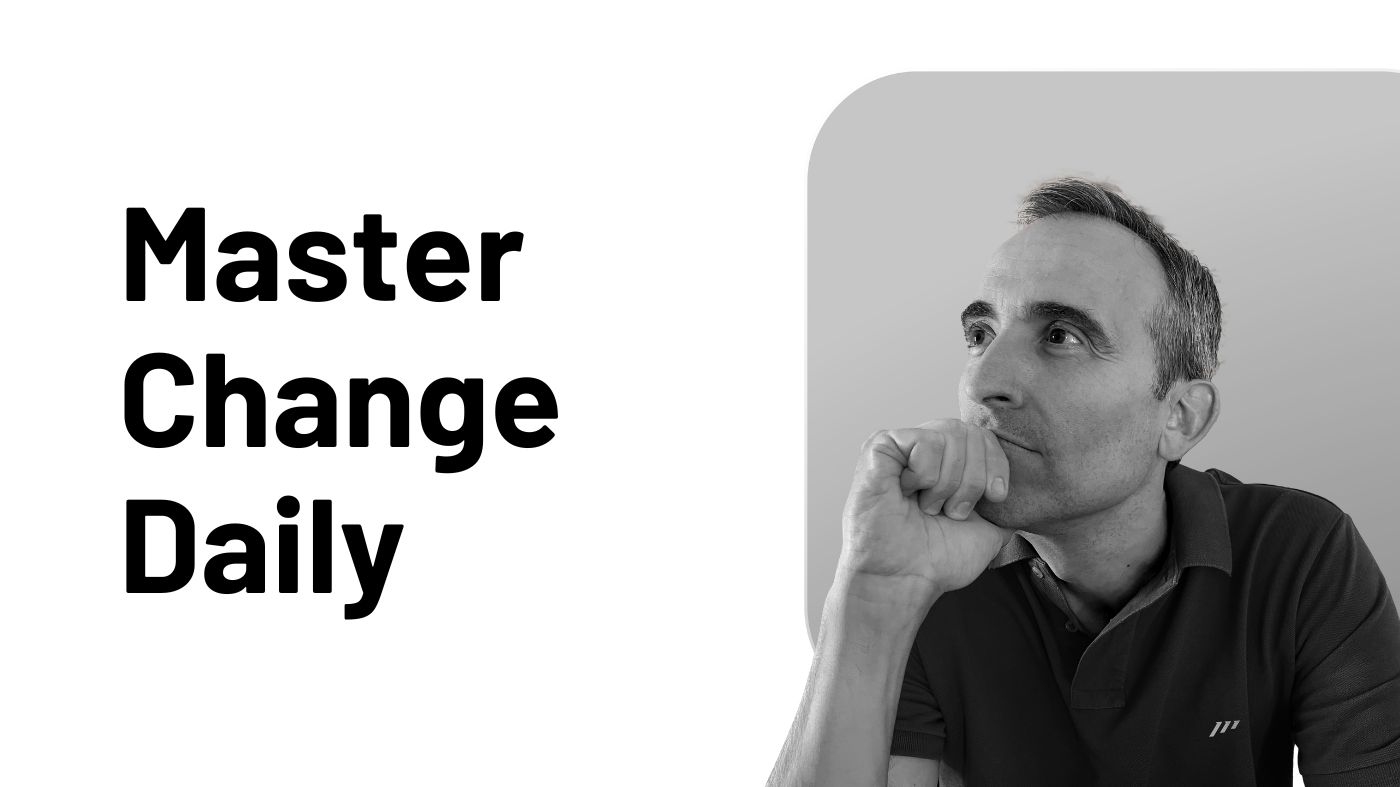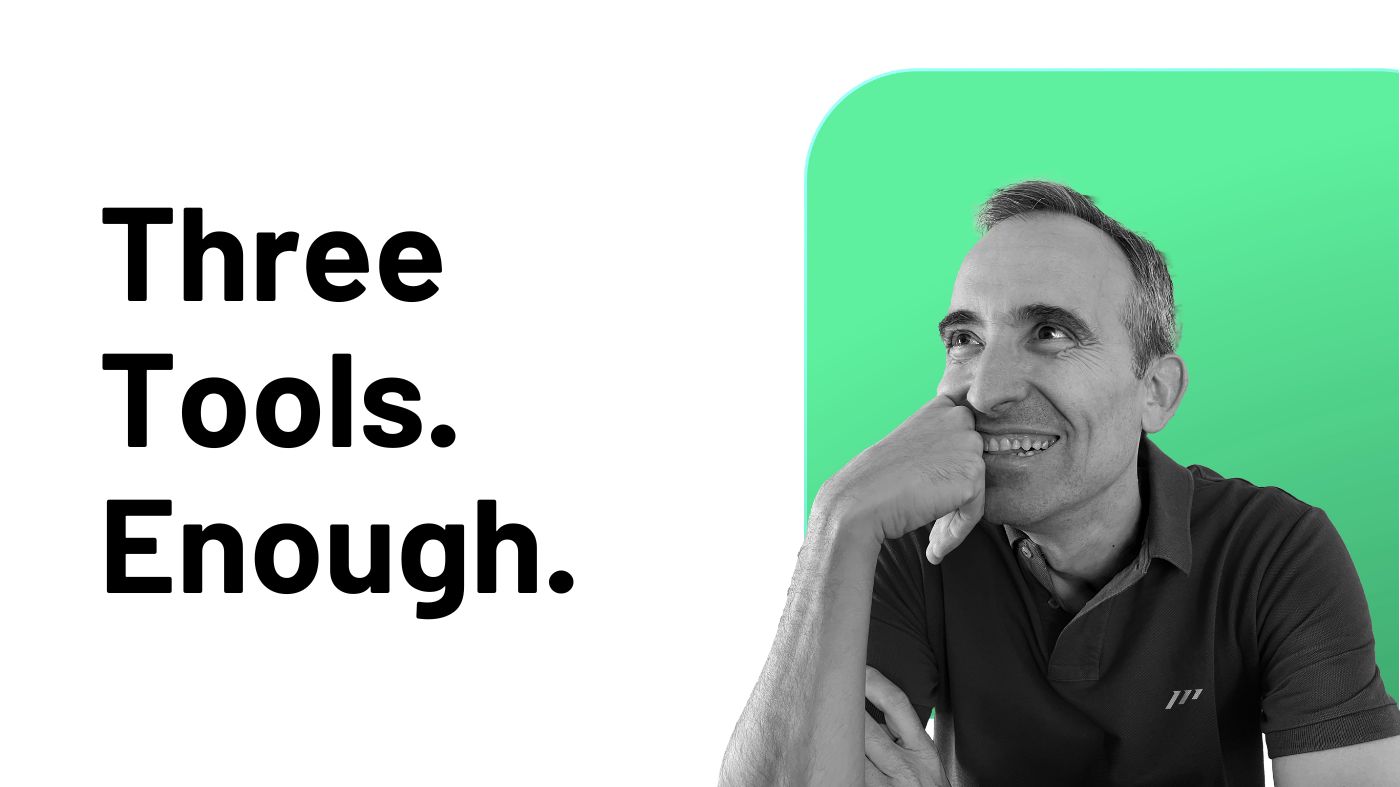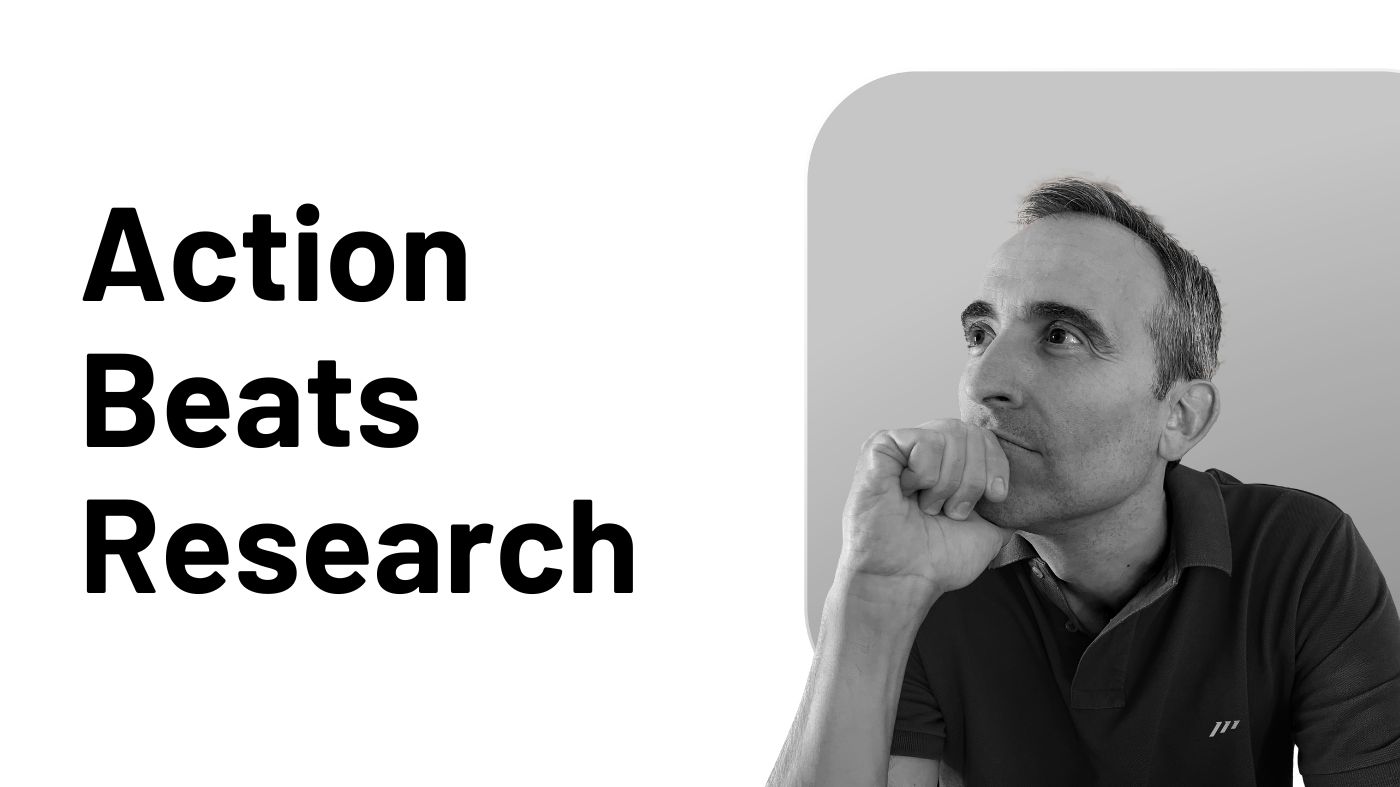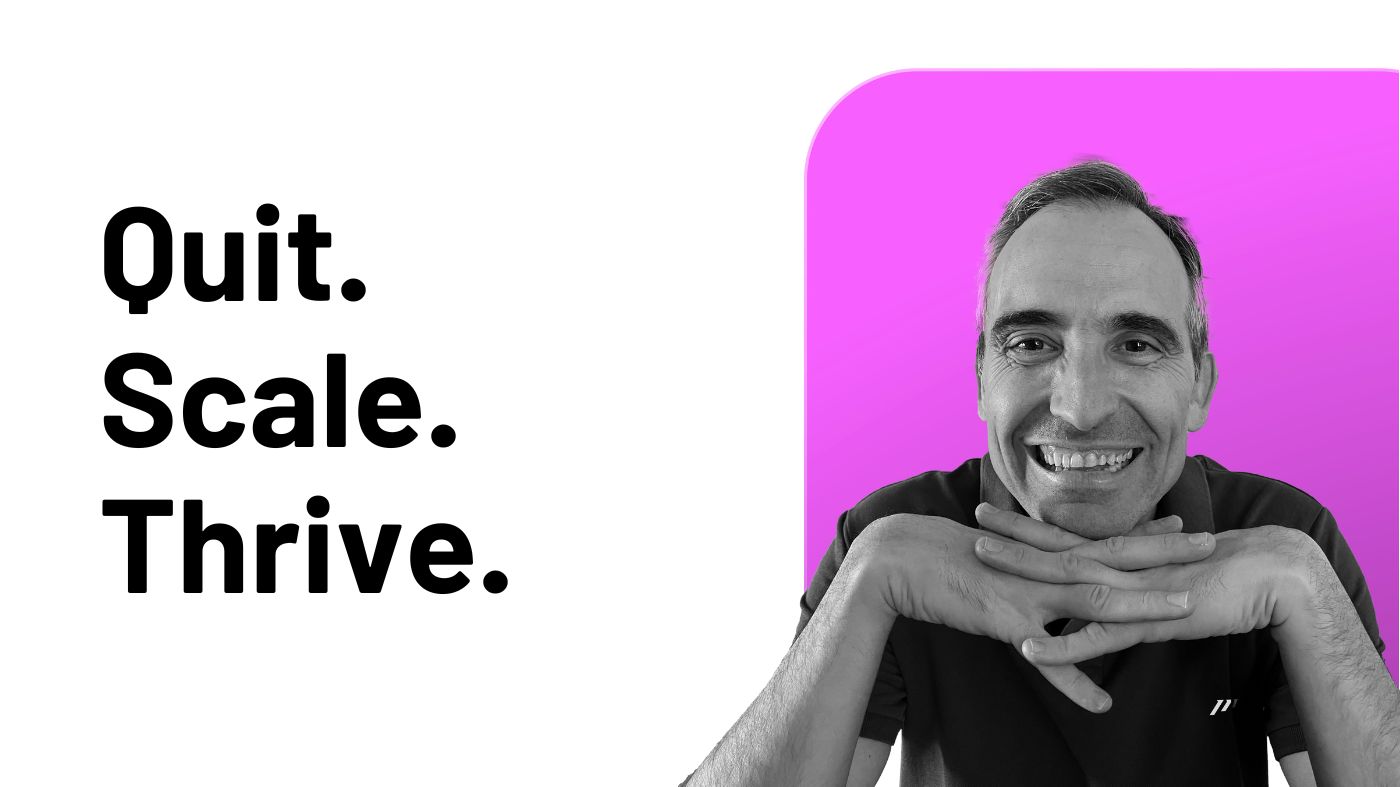Look around you right now.
The device you’re reading this on didn’t exist in its current form just a decade ago.
The job role you hold today likely has responsibilities that would have been unrecognizable to someone with your title five years ago.
The software you use daily gets updated, features change, entire platforms disappear and new ones emerge.
This isn’t chaos. This is the fundamental nature of existence itself.
From the cosmic dance of galaxies to the seasonal cycles of Earth, from the constant cellular regeneration in your body to the daily evolution of markets and technologies, everything is in perpetual motion.
Change isn’t just happening around us; it IS the very fabric of reality.
Yet here’s the paradox that defines our modern professional lives: while change accelerates at an unprecedented pace, most of us still operate as if stability were the norm.
We build our careers, workflows, and daily routines as if tomorrow will look exactly like today. We chase the illusion of control in a fundamentally uncontrollable universe.
This disconnect creates a dangerous vulnerability.
As a busy professional, you’re already experiencing this tension every single day:
-
Your morning plan gets derailed by an urgent email.
-
A project scope shifts mid-execution.
-
New tools get implemented company-wide.
-
Market disruptions force strategy pivots.
-
Your carefully crafted schedule becomes obsolete by lunch.
Most people see this constant flux as something to endure, resist, or somehow overcome.
But what if I told you there’s a different way?
What if the very system that helps you survive your chaotic daily grind could become your greatest asset for thriving in an ever-evolving professional landscape?
The answer lies in understanding a fundamental truth that ancient philosophers knew and modern science confirms: in a world where change is the only constant, your ability to adapt isn’t just an advantage. It’s your survival mechanism.
And like any survival skill, it can be systematically developed, refined, and mastered.
The Universal Law That Governs Everything (Including Your Career)
Buddhism calls it anicca.
Physics calls it entropy.
Business calls it disruption.
But they’re all describing the same fundamental force that has shaped reality for 13.8 billion years: impermanence.
Impermanence isn’t just a philosophical concept you contemplate during meditation retreats. It’s the operating system of the universe itself:
-
Every atom in your body will be replaced within seven years.
-
Every company in the Fortune 500 from 1955 has either transformed beyond recognition or disappeared entirely.
-
The half-life of learned skills in most professions has shrunk from decades to just a few years.
This isn’t happening because we live in uniquely turbulent times. This is happening because change is the default state of existence. What we call “stability” is actually just change happening at a pace slow enough for us to ignore.
Consider your smartphone.
It appears solid and permanent in your hand, but it’s actually a collection of electrons flowing through circuits at light speed, its software updating automatically, its battery degrading with each charge cycle, its market value depreciating by the minute. Even its “permanent” storage is constantly rewriting itself at the molecular level.
“The greatest discovery of all time is that a person can change [their] future by merely changing [their] attitude.” — Oprah Winfrey
Your professional life operates under the same principle:
-
The skills that got you hired are already becoming obsolete.
-
The industry you work in is being redefined by forces you may not even see coming.
-
The company you work for will look fundamentally different in five years, assuming it exists at all.
Here’s what most people miss: this isn’t a problem to be solved. It’s a reality to be embraced.
The ancient Buddhist monks who first articulated the concept of impermanence weren’t being pessimistic. They were being practical. They understood that suffering comes not from change itself, but from our resistance to it.
In the professional world, this resistance manifests as career stagnation, organizational rigidity, and the dangerous illusion that what worked yesterday will work tomorrow.
The companies that vanish from the Fortune 500 don’t die because they were unlucky. They die because they treated impermanence as an exception rather than the rule.
Why Darwin’s Most Famous Quote Was Never About the Strongest
“It is not the strongest of the species that survives, nor the most intelligent, but the one most responsive to change.” — Charles Darwin
This quote is often attributed to Charles Darwin, though he never actually said it.
The wording is most closely linked to a paraphrase by Leon C. Megginson, a management and business professor, who summarized Darwin’s ideas in a 1963 speech and later in a 1964 article.
But the misattribution reveals something profound about how we understand survival: we instinctively know that adaptability trumps raw power or even intelligence.
Darwin’s actual insight was even more radical.
In On the Origin of Species, he demonstrated that survival isn’t about being the biggest, fastest, or smartest.
It’s about fit; how well an organism matches its environment.
And since environments constantly change, the ultimate fitness is the ability to change with them.
This principle governs everything from bacterial evolution to business strategy.
Consider the business graveyard of the past two decades:
-
Blockbuster had more resources than Netflix.
-
Kodak invented the digital camera but feared cannibalizing their film business.
-
Nokia dominated mobile phones until smartphones redefined the entire category.
-
BlackBerry owned corporate communication until the iPhone made business devices consumer-friendly.
None of these companies failed because they lacked strength, intelligence, or resources. They failed because they couldn’t adapt when their environment shifted.
Now apply this to your professional life:
-
The colleague who gets promoted isn’t always the most talented or experienced. It’s often the one who adapts fastest to new technologies, shifting priorities, or changing team dynamics (or, probably, the best politician).
-
The consultant who thrives isn’t the one with the most credentials, but the one who can pivot their approach based on each client’s unique needs.
-
The departments that survive restructuring aren’t the ones with the biggest budgets, but the ones that can demonstrate value in the new organizational reality.
Here’s the uncomfortable truth: in a rapidly changing professional environment, your past successes can become liabilities if they make you resistant to change.
The expertise that made you valuable yesterday might make you obsolete tomorrow if you treat it as fixed rather than fluid.
But adaptability isn’t just about survival. It’s about thriving.
The professionals who embrace change don’t just weather disruption; they capitalize on it. They see market shifts as opportunities, new technologies as tools, and organizational changes as chances to add value in new ways.
The question isn’t whether change will come to your industry, your company, or your role.
The question is whether you’ll be ready when it does.
The Most Dangerous Place in Modern Business (Hint: It Feels Safe)
“The comfort zone is a behavioral state within which a person operates in an anxiety-neutral condition, using a limited set of behaviors to deliver a steady level of performance, usually without a sense of risk.”
This definition comes from Judith Bardwick’s groundbreaking 1991 work Danger in the Comfort Zone.
But here’s what makes it particularly relevant today: what Bardwick identified as merely “dangerous” three decades ago has become lethal in our current environment.
Your comfort zone once served an important evolutionary purpose. It kept your ancestors alive by encouraging them to stick with proven survival strategies:
-
Don’t eat the unfamiliar berries.
-
Don’t wander into unknown territory.
-
Repeat what worked yesterday.
This risk-averse programming served humanity well for millennia. But it’s now become a professional death sentence.
Here’s why: the modern world has inverted the relationship between safety and risk.
-
What feels safe (doing what you’ve always done) is actually the riskiest strategy possible.
-
What feels risky (learning new skills, adopting new technologies, changing established processes) is actually your safest bet for long-term survival.
Consider these comfort zone casualties:
-
The expert trap: The accountant who mastered spreadsheets but avoided learning data visualization tools. The marketing manager who perfected email campaigns but resisted social media. The project manager who excelled at waterfall methodology but dismissed more realistic approaches. Their expertise became their prison.
-
The process trap: The company that perfected their hiring process over two decades, only to discover they were optimized for attracting yesterday’s workforce. The sales team that mastered cold calling just as their prospects stopped answering phones. The training department that perfected in-person workshops right before remote work became the norm.
-
The identity trap: “I’m not a tech person.” “I don’t do social media.” “That’s not how we’ve always done it.” These statements aren’t personality traits; they’re professional obituaries written in advance.
The cruel irony is that comfort zones feel comfortable precisely because they shield us from the anxiety of learning and adapting.
But that anxiety isn’t a bug in the system; it’s a feature. It’s your internal warning system telling you that growth is happening.
In a world where change is accelerating, staying in your comfort zone isn’t maintaining the status quo. It’s actively moving backward while everyone else moves forward.
The most successful professionals have learned to reframe this anxiety.
Instead of seeing discomfort as a sign they’re in the wrong place, they’ve learned to see it as confirmation they’re growing.
Instead of avoiding uncertainty, they’ve learned to navigate it systematically.
Your Change-Navigation System: The One Tool That Masters Chaos
Now comes the practical question: if change is inevitable and comfort zones are dangerous, how do you actually navigate constant uncertainty without burning out or losing your sanity?
The answer isn’t what most people expect.
It’s not about becoming more flexible, more resilient, or more adaptable in some abstract sense.
It’s about building a concrete system that handles complexity and change as its core function.
Think about air traffic control.
Controllers don’t manage the chaos of hundreds of aircraft by being naturally calm or exceptionally talented.
They manage it through systematic processes that account for constant variables: weather changes, route modifications, emergency situations, equipment failures. The system itself is designed to handle uncertainty.
“To improve is to change; to be perfect is to change often.” — Winston Churchill
Your professional life needs the same systematic approach.
A productivity system isn’t just about getting more done or organizing your tasks.
It’s a change-management infrastructure that creates stability in an unstable environment.
It’s your personal air traffic control system for navigating professional complexity.
Here’s what most people miss: the very skills that help you survive your chaotic daily workload are identical to the skills that help you adapt to long-term change.
Consider what happens during a typical busy day:
-
Priorities shift without warning.
-
New information requires strategy adjustments.
-
Unexpected opportunities demand quick decisions.
-
Resource constraints force creative solutions.
-
Multiple stakeholders pull you in different directions.
Sound familiar?
It should, because these are exactly the same challenges you face when adapting to industry changes, organizational restructuring, or career transitions.
The scale is different, but the core skills are identical.
A robust productivity system teaches you to:
-
Capture and process information rapidly, essential when new technologies or market conditions emerge.
-
Prioritize ruthlessly under pressure, crucial when resources are limited during transitions.
-
Maintain clarity amid complexity, vital when navigating ambiguous situations.
-
Execute consistently despite interruptions, necessary when external changes disrupt your plans.
-
Review and adjust systematically, the foundation of all adaptive behavior.
The professionals who thrive during disruption aren’t necessarily smarter or more talented.
They’re the ones who have systematized their approach to handling change at every level, from minute-to-minute information and task management to year-to-year career strategy.
Your productivity system becomes your competitive advantage not because it makes you more efficient, but because it makes you more adaptable.
It’s the difference between being a leaf blown by the wind and being a skilled sailor who uses the wind to reach their destination.
Building Your Anti-Fragile Foundation (The 4 Pillars of Change Mastery)
Nassim Taleb introduced the concept of “antifragility” in his book of the same name.
Unlike fragile systems that break under stress, or resilient systems that withstand stress, antifragile systems actually get stronger when exposed to volatility and uncertainty.
Your productivity system needs to be antifragile. It shouldn’t just survive disruption; it should use disruption as fuel for improvement.
Here are the four foundational pillars that transform any productivity system from a simple organizational tool into a change-mastery engine.
Pillar 1: Rapid Information Processing
In a constantly changing environment, your ability to quickly capture, categorize, and act on new information determines your survival speed.
This means:
-
Having a single, trusted productivity system for capturing everything that crosses your path.
-
Developing the habit of immediate processing rather than accumulation.
-
Creating clear decision criteria that work under pressure.
-
Building information filters that separate signal from noise.
Pillar 2: Dynamic Priority Management
Static to-do lists die in dynamic environments.
Your productivity system must handle priority shifts gracefully:
-
Context-based organization that adapts to changing circumstances.
-
Regular review cycles that catch shifts before they become crises.
-
Clear criteria for saying no to good opportunities that don’t align with current priorities (goals).
-
Buffer time built into schedules to accommodate the unexpected.
Pillar 3: Systematic Learning Integration
Every change in your environment is a learning opportunity.
Your productivity system must capture and apply these lessons:
-
Regular reflection processes that extract insights from experience.
-
Documentation of what works and what doesn’t in different situations.
-
Active experimentation with new approaches and tools.
-
Knowledge management that makes past learnings accessible for future decisions.
Pillar 4: Stress-Testing and Evolution
Antifragile systems improve under pressure.
Your productivity system must do the same:
-
Regular system reviews performed on autopilot that identify weak points before they break.
-
Deliberate practice with high-pressure scenarios.
-
Continuous refinement based on real-world performance.
-
Built-in redundancy for critical processes.
The beauty of this approach is that it scales.
The same productivity system that helps you handle a chaotic Tuesday also prepares you for industry disruption.
The same workflows that manage daily fire drills also navigate career transitions.
This isn’t about perfection. It’s about building a productivity system that gets better through use, stronger through challenge, and more valuable through change.
Your Evolution Starts Today (Because Tomorrow’s Changes Won’t Wait)
You now understand the reality: change isn’t coming.
Change is here. It’s been here since the beginning of time, and it will continue long after we’re gone.
You understand the principle: in a world of constant flux, adaptability isn’t optional. It’s your primary survival skill.
You understand the paradox: what feels safe (staying in your comfort zone) is actually dangerous, while what feels risky (embracing change) is actually your safest strategy.
You understand the solution: a robust productivity system isn’t just about organization. It’s about building an antifragile foundation that turns chaos into competitive advantage.
The question now isn’t whether you need to change. The question is whether you’ll change proactively or wait for change to force your hand.
“If you want something you’ve never had, you must be willing to do something you’ve never done.” — Thomas Jefferson
Here’s what happens next:
-
Start with your current chaos. Don’t wait for the perfect moment to begin building your productivity system. The fire drills, urgent emails, and shifting priorities you’re dealing with today are your training ground. Every challenge you face is an opportunity to stress-test and strengthen your approach.
-
Build systematically, not perfectly. Your productivity system doesn’t need to be flawless from day one. It needs to be functional and improvable. Start with the basics: capture what resonates, process regularly, prioritize ruthlessly, execute consistently, review systematically. Refine as you go.
-
Embrace the discomfort. That anxiety you feel when learning new tools, adopting new processes, or stepping outside your expertise? That’s not a warning sign. That’s confirmation that you’re growing. The professionals who learn to be comfortable with discomfort are the ones who thrive in uncertain times.
-
Think in systems, not tools. Don’t just ask “What tool do I use for this?” Ask “What system would handle today’s challenges better?” Don’t just solve the immediate problem (tool approach); build the capability to solve similar problems more effectively in the future (systems approach).
The ancient Greek philosopher Heraclitus said, “No man ever steps in the same river twice.” The river is always changing, and so is the person stepping into it.
Your professional river is flowing faster than ever. You can’t stop it. You can’t control it. But you can learn to navigate it with skill, purpose, and confidence.
The choice is yours: evolve or become extinct.
Your evolution starts now.




